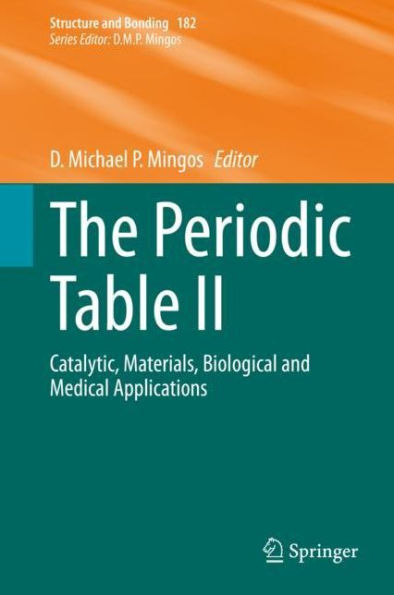5
1
9783030400095



The Periodic Table II: Catalytic, Materials, Biological and Medical Applications available in Hardcover, eBook

The Periodic Table II: Catalytic, Materials, Biological and Medical Applications
- ISBN-10:
- 3030400093
- ISBN-13:
- 9783030400095
- Pub. Date:
- 02/06/2020
- Publisher:
- Springer International Publishing
- ISBN-10:
- 3030400093
- ISBN-13:
- 9783030400095
- Pub. Date:
- 02/06/2020
- Publisher:
- Springer International Publishing

The Periodic Table II: Catalytic, Materials, Biological and Medical Applications
$379.99
Current price is , Original price is $379.99. You
379.99
In Stock

Product Details
| ISBN-13: | 9783030400095 |
|---|---|
| Publisher: | Springer International Publishing |
| Publication date: | 02/06/2020 |
| Series: | Structure and Bonding , #182 |
| Edition description: | 1st ed. 2019 |
| Pages: | 242 |
| Product dimensions: | 6.10(w) x 9.25(h) x (d) |
About the Author
From the B&N Reads Blog
